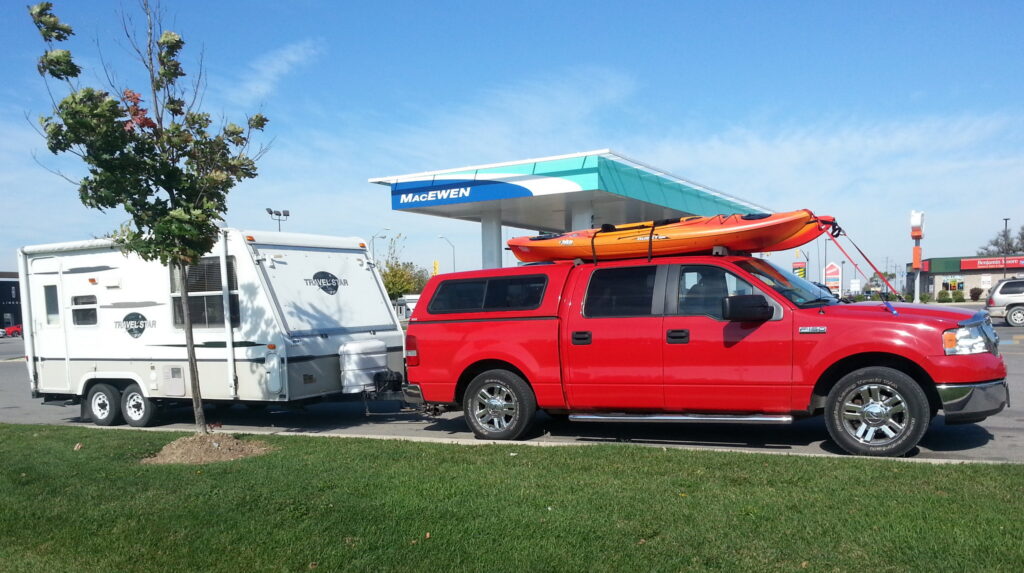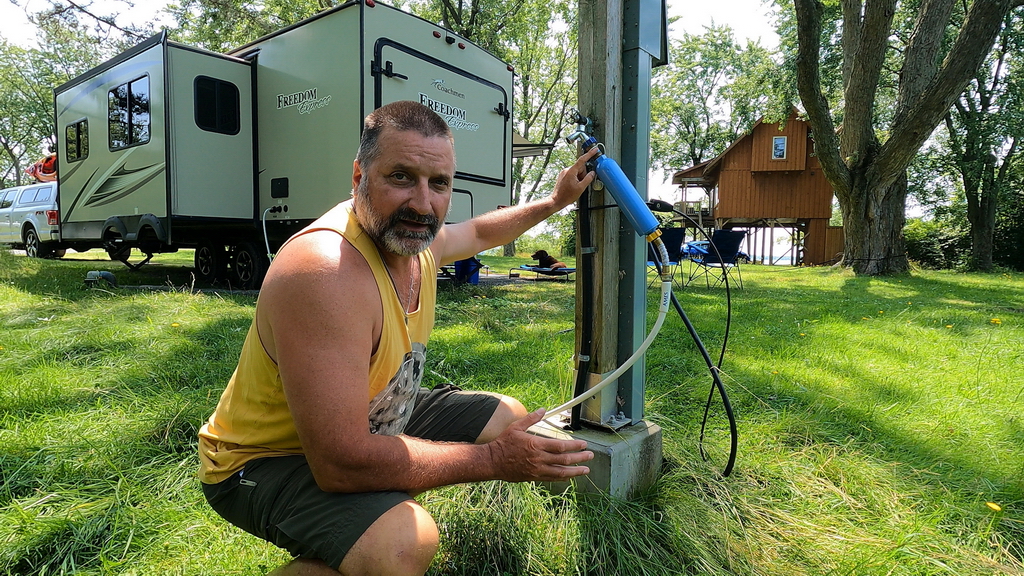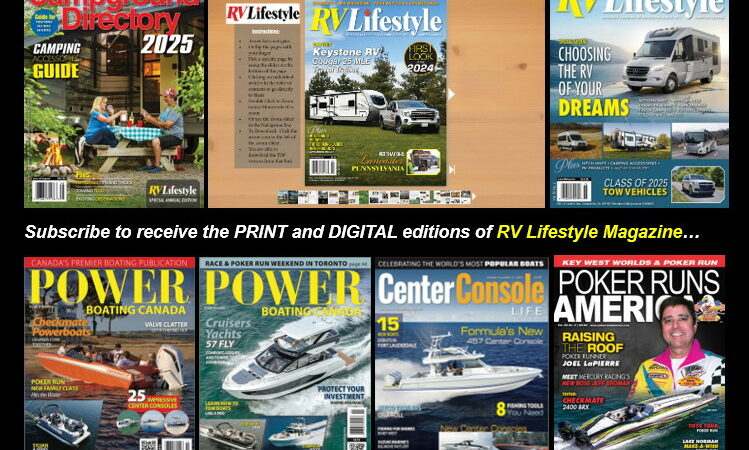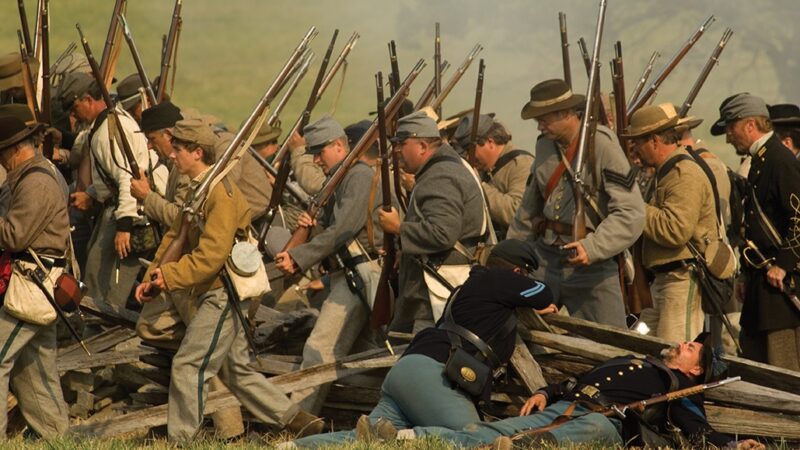Things We Wish We Knew…
When we started RVing…
By Ben and Cheryl Coles – AKA Camping with the Coles
Cheryl and I have been camping together since the 80s. In 2010 we got our first travel trailer and started our RV adventures. In 2019 we started our YouTube channel “Camping with the Coles”, and in 2024 we started writing articles for RV Lifestyle Magazine. We’ve experienced a lot, made a lot of mistakes and learned from our mistakes.
In this article we want to share with you the things we wish we knew when we first started RVing so you can be better prepared for your RV adventures.
We’re going to start with your tow vehicle. We want to understand the important weight ratings to ensure you’re matched well with a trailer and are safe. Are you using the vehicle you currently have or are you thinking of getting a new vehicle? What features and numbers should you be looking at?
Next, we want to match a trailer to the tow vehicle. What weights and features are important?
Then we are going to talk about actually going out camping in your trailer and when you arrive at the campsite. We have some tips and tricks we’ve learned over the years that can make your camping adventure much easier and more enjoyable.
Tow Vehicle
There are so many numbers when it comes to your tow vehicle and your trailer. You have towing capacity, dry weight or Unloaded Vehicle Weight (UVW), Gross Vehicle Weight Rating (GVWR), cargo carrying capacity (CCC), Front Gross Axle Weight Rating (GAWR), Rear Gross Axle Weight Rating (GAWR), hitch weight or tongue weight and the Gross Combined Weight Rating (GCWR). We’re not going to go into every one of them here. You’ve heard the saying you’re only as strong as your weakest link. It definitely applies here. For small tow vehicles like cars, minivans and small SUVs, the weakest link is most likely going to be the towing capacity. For larger more traditional tow vehicles like half ton pickup trucks the weakest link is likely going to be the CCC.
The towing capacity includes the total weight of the trailer and all it’s cargo and the cargo weight in the tow vehicle. That includes passengers.
The Cargo Carrying Capacity includes everything that goes into the truck after it leaves the factory full of all fluids including a tank of gas. The cargo consists of passengers, gear and aftermarket additions and modifications.
There is so much information and misinformation out there about what a vehicle can tow. I once overheard a sales person tell a person that they can tow a trailer with a dry weight of 3,000 lbs with their minivan that had a 3,500 lb towing capacity. It was never mentioned that the GVWR of the trailer was 4,400 lbs. So, the trailer fully loaded for camping could be as heavy as 4,400 lbs and from our experience it’s pretty easy to get your trailer weight up to the GVWR. So, that trailer would be 900 lbs over the tow capacity of the tow vehicle. It should be noted that the tow capacity for that minivan was based on a 150 lb driver and nothing else in the van. What if you added a 200lb person and maybe two 100 lb kids in the van. That’s another 400 lbs and now you’re 1,300 lbs over the towing capacity of the van and you haven’t’ even put anything else in the van. Imagine if you put food and a cooler and maybe a couple of kayaks on the roof, you’d easily be 1500 lbs over the tow rating of the tow vehicle. I had to interject and tell the person that that if they were actually packed like most people pack for a camping trip that it would be very hard on the minivan, the weight would be well over the tow rating of the minivan and it would be unsafe.

For larger tow vehicles like half ton pick up trucks towing larger trailers, the weakest link is almost always the CCC of the tow vehicle. For us, cargo includes our truck cap and kayak racks. It includes passengers consisting of two adults and a dog. It includes the regular gear we have in the truck like a tool box, tools, everyday stuff in the glove box, centre console, door consoles etc.
When camping we often have two kayaks on the roof, two folding e-bikes in the box as well as camp chairs, propane, butane, skid wood, beach umbrella, and kayaking and biking gear. You also have to include the weight of the weight distribution hitch. All that gets us close to 1,000 pounds of cargo. Now, the big thing that has to be included in the CCC is the hitch weight or tongue weight of the trailer. Ideally the weight on the hitch should be 10% to 15% of the weight of the trailer. For us with a trailer dry weight of 5,500 lbs and a trailer GVWR of 7,500 pounds we have to look at the GVWR as that is the more accurate number to what we’ll actually be towing. That means a hitch weight of 750lbs to 1,125lbs. So, a rough estimate or our cargo weight is between 1,750 lbs and 2,125 lbs. As you can see, we are close to or over the CCC while well below the towing capacity of 13,500 lbs.
If you have a look around at campgrounds, you’ll see mostly half ton pickups like the Ford F150 or the Chevy 1500 or the GMC 1500 or the Ram 1500 towing similar sized trailers as ours. I’d bet most of them are over their CCC. You can talk to a lot of people and they’ll tell you that they’ve been towing like this for years and have had no problems but I’m just saying, by the numbers they’re overweight.
On the Ford website they have a towing calculator. You can enter your truck VIN and it’ll then show all the weight numbers for your truck from the factory. You can enter in the weights of everything including passengers, cargo and accessories and it’ll tell you how much it can tow. You might just find out that your truck rated to tow a 13,500 lbs trailer just might now only be rated to tow a small utility trailer.

Trailer
When it comes to the trailer, we don’t really care much about the dry weight because you’ll never tow the dry weight of the trailer. Even pulling away from the dealership it’ll weigh more than the dry weight because they’ll have likely added a battery to it and have thrown in an extension cord and a sewage hose and some other stuff. The GVWR is what we really look at because that is more accurate as to what you’ll actually be towing. Subtract the dry weight from the GVWR and you’ll know your CCC of your trailer. Our trailer has a dry weight of 5,500 lbs and a GVWR of 7,500 lbs which means a CCC of 2,000 lbs, and we pretty much use up all of that 2,000 lbs.
We were camping at Watkins Glen State Park in New York State last year and a trailer pulled in next to us – I couldn’t believe how long that trailer was. It turned out to be 39 feet. Ours is 30 feet. I looked at the wheels and axles and they looked like mine so I was so curious what the weights were for that trailer. I ended up going over and having a look at the sticker at the front driver’s side of the trailer where it shows all the weights. It had a dry weight of 6,600lbs and a GVWR of 7,500lbs. Which means it has a cargo capacity of 900 lbs! I could only imagine what would happen if I told Cheryl that we got a new trailer that is 9 feet longer with lots more storage space but you can only bring less than half the stuff we have in our current trailer. That just might bring about the end of our marriage.
So, when we look at trailers, we pay particular attention to their CCC. 7,500 lbs is a common GVWR as it uses two axles rated at 3500lbs each. So, if you have those axles on a 5,000 lb trailer you have 2,500 lbs of CCC. If it’s on a 6,600 lb trailer, you have 900 lbs of cargo capacity. Choose wisely.
I will say, if I were to be overweight on either the trailer or the tow vehicle, I’d much rather be overweight on the tow vehicle because I have much more faith in the build quality and the structure of a tow vehicle than I do in the build quality and structure of a travel trailer.
Getting Ready To Go Camping
Now we have our tow vehicle and we have our trailer. Let’s get camping!
There are a few things we’d do right away when getting a new RV.
If the trailer has a GVWR of over 5,000 lbs you should get a weight distribution hitch. Usually, the RV dealer will tell you that. The tow rating on your truck is based on using a weight distribution hitch when towing over 5,000 lbs.
Take pictures of every label on your trailer and your truck. Many of those labels will fade over time and they have important information on them about weights. Keep them somewhere accessible like Google Keep on your phone.
Look into getting insurance for your trailer. Some insurance companies add onto your home insurance and your auto insurance and some companies have a separate RV insurance.
Look into roadside assistance. You might currently have some sort of roadside assistance but that only covers your vehicle. What happens if your tow vehicle breaks down. Your roadside assistance will tow your tow vehicle but what about your trailer. What if you get a flat tire on your trailer or you get locked out of your trailer, your vehicle regular roadside assistance won’t cover that. You need to get additional coverage for your RV. We use CAA with the RV Plus add on. That way both our tow vehicle and trailer are covered.
Keep all manuals that come with the trailer in one location in your trailer. They don’t do you any good at home when you’re out camping and something breaks down.
If you don’t already have it, and your trailer has electric brakes, you’ll need a trailer brake controller. That can either be integrated into your tow vehicle or you can get an aftermarket one.
Get vent covers to cover the roof vents. That way you can keep them open when travelling down the road and you can keep them open in the rain. This allows for good ventilation. For some reason most trailers don’t come with vent covers and I think they should.
Get a Tire Pressure Monitoring System (TPMS). You want to know what’s happening with your trailer tires because a blowout could be dangerous and could cause a lot of damage. The peace of mind that comes with a reliable TPMS is invaluable.
If you’re camping in Ontario Provincial Parks you’ll want about 100 ft of extension cord. 30 amp or 50 amp, whatever your trailer uses. Some of those power pedestals can be pretty far from where you park your trailer. We have the 25 foot cord that comes with the trailer, another 25 foot one and a 50 foot one.
Get a surge protector or Electronics Management System (EMS) to protect your trailer’s electrical system from power surges or even low voltage. We also like to have a lock for the surge protector, so nobody steals it.

We like to have a portable water filter. We try to filter all water going into our trailer to keep the water system as clean as possible.
You’ll need chocks to hold the trailer in place. We prefer the rubber ones over the plastic ones as they hold up better and don’t smash if you run over them. X-chocks aren’t really chocks, they’re actually stabilizers so if you use them you should still use regular chocks.
You’ll need something to level the trailer. Whether that be pieces of 6X6 lumber, or plastic stackable blocks or something like a levelling ramp like Anderson levellers. Also, have a level so you know when the trailer is level.
Make sure you have a sewer hose. We like to add a clear section on the hose so that you can see what’s flowing through it. That way you can tell when the messy stuff is done coming out. Along with that you’ll want disposable gloves and sanitizer or wipes. You’ll need a place to store the sewer hose that is contained so it doesn’t contaminate other items. We store ours in our rear bumper. Some people have a plastic tube attached underneath to store it or you can put it in a bin with a lid.
If you plan on doing any camping without hookups, even if it’s just for overnight you should look into getting Lithium Iron Phosphate Batteries (LiFePO4). Modern trailers today come with just an electric fridge and no propane option so they use more battery power when off grid. You should consider swapping out the 85 to 100 Ah lead acid battery that likely came with your trailer, for a bigger LiFePO4 battery, like maybe 200 amp hours or more depending on how many days in a row you plan to camp without hookups. The prices of LiFePO4 batteries have dropped dramatically over the last few years, making them very affordable and competitive with lead acid batteries.
We like to be somewhat self sufficient, so we carry the tools to fix a flat tire and to maintain the tires. That includes a bottle jack to jack up the trailer, a small air compressor, a properly sized tire iron to remove the lug nuts and a torque wrench. When we get a flat tire on the trailer, I can have the spare on it and have us back on the road in 15 minutes. Waiting for roadside assistance would take much longer.
If you plan on staying at parks that have a water hook-up, it would be wise to get a water pressure regulator to make sure too much pressure doesn’t get into your pipes and cause a problem.
When you are fully loaded and going on a camping trip it would be a good idea to go to a weigh scale and check your weights. You can go to a CAT Scale. They often have them at truck stops like The Flying J or Husky. Once you know your weights, type up a card with all the weights and measurement for your truck and trailer and attach it to the driver’s visor. It should show:
- Trailer height – measure from the ground to the top of the air conditioner
- Trailer width
- Trailer length – measure from the front of the coupler to the rear bumper or spare tire if it sticks out further
- Truck/Trailer combined length
- Loaded trailer weight
- Loaded truck weight
- Loaded combined truck and trailer weight
Be sure to have all weights in metric and imperial. That way you’ll know at a moments notice if you your low enough to fit under that bridge or if you’re light enough to drive over that bridge or if your total length is short enough to fit onto that ferry.
There are so many other small things that we bring with us to enhance our camping trips but we can’t get into everything here. For instance, we’d immediately swap out the shower head with an Oxygenics shower head and we’d swap out the lousy mattress for a better one. You should have a took box with basic tools for repairs with things such as awning repair tape, rubber roof repair tape, RV caulking, spare plumbing parts, fuses etc. There’s a lot more stuff but it’s stuff you can figure out for yourself.
At The Campground
So now you’ve made it to the campground.
Find out where to hook up for water and if it’s not a water hookup at the site make sure you get your water before you set up at the campsite.
Make sure you can reach any and all hook-ups before unhooking the trailer.
When pulling into a site have a spotter. I’m always driving so Cheryl is the spotter. If there is cell service use cell phones to communicate. Use hands free in the truck. If no cell service use walkie talkies. We’ve all heard the husbands and wives shouting at each other and getting heated when backing into a site. Don’t be those people. Use directions such as drivers’ side and passenger side, which is better than left and right when each of you may be facing a different direction.
Try to get as level as possible from side to side and use levellers if necessary.
Always chock your wheels before unhooking.
Have a process and stick to it. Making a list and going through it each time helps to ensure you’re not missing anything. Cheryl always chocks the wheels and plugs us in to electrical while I’m unhooking and levelling. After that I do all the outdoor set up and Cheryl does all the indoor set up. We usually finish at around the same time. We do the same thing for packing up at the campsite. The same process in reverse.
So that’s it! Those are some of the things we wish we knew when we started RVing. There are so many things to learn when RVing and that learning process is always continuing and evolving. Much of it you just have to figure out yourself. We hope this article serves as a good starting point for your RV adventures.
For links to many of the products mentioned in this article you can check out our Amazon Storefront: https://www.amazon.ca/shop/campingwiththecoles
To see our YouTube video on this topic you can check it out here:
[embedded content]






